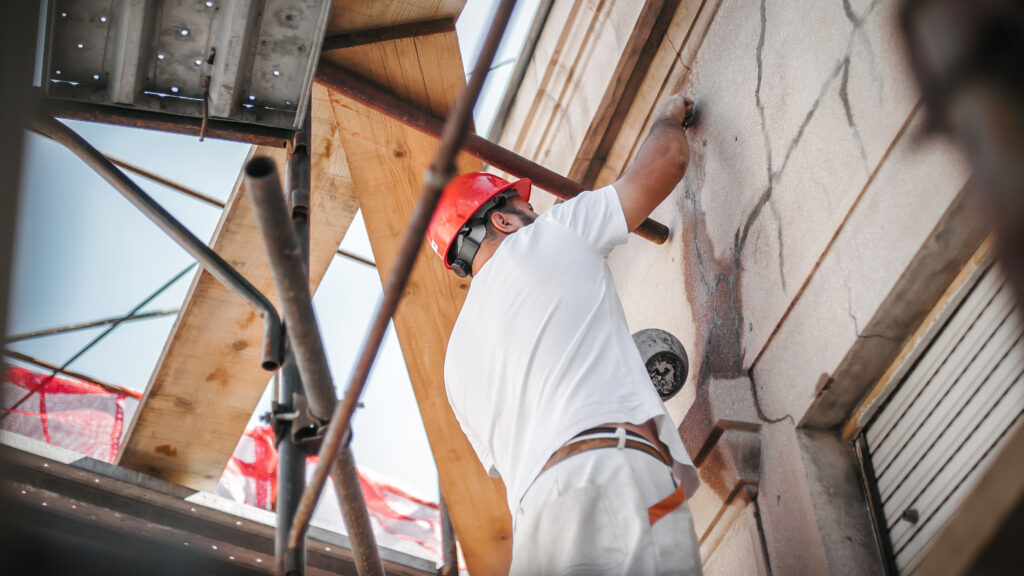The Façade Ecobonuses and Bonuses, introduced in the 2020 Budget and re-confirmed for the following year, have been once again re-confirmed for 2022. Here’s what is included in the extension in the 2022 Budget (Law on. 234/2021) and we will explain everything you need to know about the 2022 Ecobonus and the Ecobonus for façades.
The concessions aimed at the world of construction focus on upgrading Italy’s enormous real-estate heritage, that is now dated and often scared by poor performance in terms of energy saving and comfort. The Ecobonus for façades for the current year foresees a 60% deduction in renovation and restoration work on the external façades of buildings visible from the ground for public use. In particular, it focuses on the work for opaque structures on the façade, balconies, ornaments and decorations and also includes work involving simple cleaning and painting. The buildings covered by the Ecobonus façade reconstruction, in any land register category (including shop units), need to already be existing and located in:
- Zone A, that is, built-up urban areas of historical, artistic interest or of particular environmental value, such as historical town centres or similar;
- Zone B, or rather, fully or partially built-up areas, at least 12.5% of the overall surface area, with a territorial density in excess of 1.5m3/m2. Residential suburbs are an example of this.
Buildings currently under construction or those subject to demolition for further reconstruction are excluded from the façade Ecobonus and bonus. In addition, no concessions are foreseen from the Ecobonus for façades for work on internal façades overlooking apartment block courtyards or private car parks.
Who is the Ecobonus for façade restoration aimed at and how to make use of it
The 2022 Ecobonuses and Ecobonuses for façades are open to all taxpayers, Irpef (personal income tax) payers and passive Corporate Income Taxpayers who own any kind of real estate.
In specific terms, physical persons have access to the façade restructuring Ecobonus deductions (including art and professional operators), taxpayers with a business income, simple partnerships and associations among professionals, and public and private organisations involved in commercial activities. Those, on the other hand, with incomes solely with separate tax or substitute tax regimes are excluded.
The Ecobonus for façades is distributed in three different ways:
- Deduction on tax declarations, issued by the Revenue Agency via Irpef deductions over a period of ten years;
- Discount on the invoice, to benefit from a 60% reduction in the amount at the point of payment to the company that did the work;
- Assignment of future receivables to third parties, like a bank or insurance company.
For those who choose an invoice discount or assignment of future receivables, the Ecobonus 2022 introduced the requirement to present a stamp of approval and technical affirmation of expenditure adequacy.

Ecobonus for façades: the advantages of ventilated façades
A wide range of benefits have emerged in Italy in recent years, aimed at greater sustainability, upgrading of building heritage and the improvement of urban standing. If the aim is to make use of 60% discounts envisaged by the façade restoration Ecobonus, choosing a ventilated façade can be an excellent opportunity for energy upgrading and the ideal solution for comfort in any season, as well as offering considerable results from an appearance point of view.
The ventilated façades are dry cladding systems, with a support structure anchored to the wall and a support vestment with visible or invisible types of securing. As the façade is an architectural element that connects the building with its urban context, responsible for the interaction of light and heat with the outside, it is important to choose quality cladding capable of guaranteeing excellent performance. The ventilated façade can result in not only excellent aesthetic results but, above all, in terms of resistance, sustainability and durability required to fall within the Minimum Environmental Criteria for buildings (CAM) and to access the 2022 Ecobonus.
Using the Ecobonus for façades to choose a ventilated façade solution will bring with it numerous advantages that make the ventilated system the most practical solution for protecting buildings and providing energy efficiency:
- Maximum thermal-acoustic insulation;
- Up to 20% less energy consumed;
- Environmental sustainability;
- Breathability and excellent level of protection against bad weather;
- Protection against solar rays;
- Aesthetic enhancement of every kind of space and improvement of the architectural profile;
- Simpler, cheaper maintenance;
- Overall optimisation of the cladding performance;
- Widespread improvement of living comfort.
Lastly, choosing the ventilated façade thanks to the façade restoration Ecobonus is a great opportunity to improve the performance of a building in terms of quality of life and sustainability.



